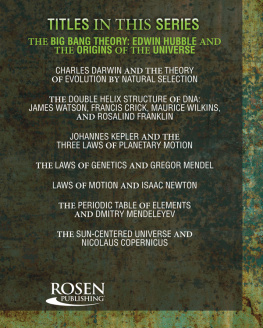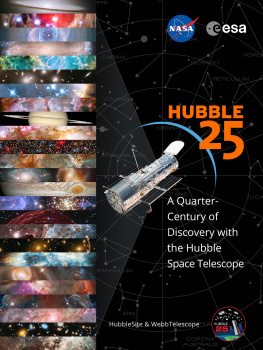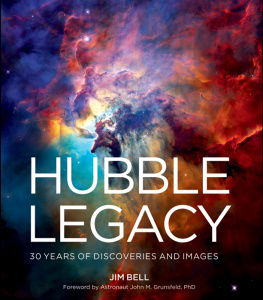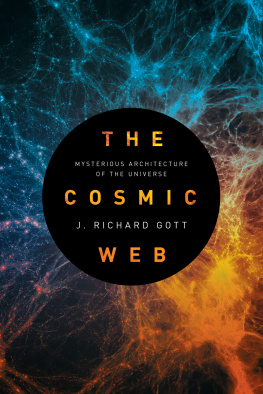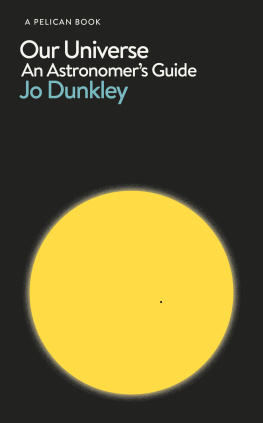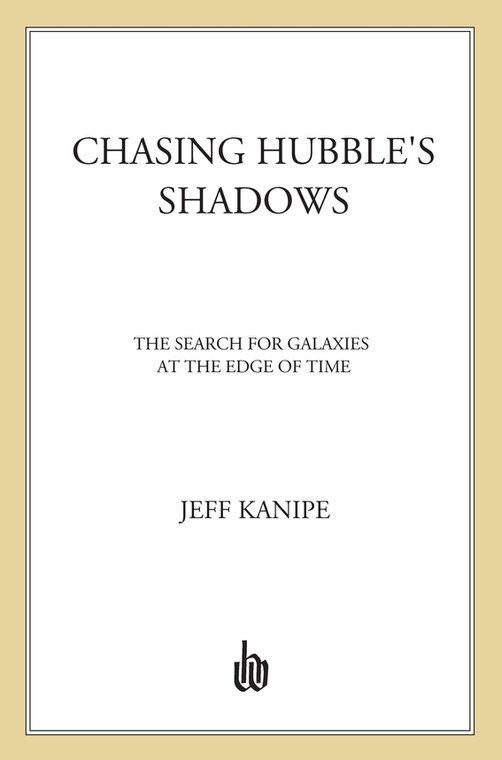Aside from interviews and e-mail exchanges with astronomers, a great deal of this book is based on the references below. The books listed provide mainly historical and fundamental background material, while the papers and articles reflect largely recent research, though a few, such as the letter by Fritz Zwicky, are of historical interest. With respect to the astro-ph/ and in press references, since the production process of a book like this precedes its publishing date by roughly a year, readers may assume that most of these papers have now been published in science journals, books, or proceedings. Bear in mind that some of the final versions of those papers may differ slightly from the ones cited here.
BOOKS
Arp, Halton. Atlas of Peculiar Galaxies. California Institute of Technology, 1966. Available online at http://nedwww.ipac.caltech.edu/level5/Arp/Arp_contents.html .
Berendzen, Richard, Richard Hart, and Daniel Seeley. Man Discovers the Galaxies. Columbia University Press, 1984.
Danielson, Richard Dennis, ed. The Book of the Cosmos: Imaging the Universe from Heraclitus to Hawking. Helix Books, Perseus Publishing, 2000.
Eddington, Sir Arthur. The Expanding Universe. Cambridge Science Classics, 1987.
Harrison, Edward. Cosmology: The Science of the Universe , 2nd ed. Cambridge University Press, 2000.
Harwit, M. Cosmic Discovery: The Search, Scope, and Heritage of Astronomy. MIT Press, 1984.
Hubble, Edwin. The Realm of the Nebulae. Yale University Press, 1936, 1982. Kirshner, Robert P. The Extravagant Universe. Princeton University Press, 2002.
Lang, Kenneth R., and Owen Gingerich. A Source Book in Astronomy and Astrophysics, 1900-1975. Harvard University Press, 1979.
Lemonick, Michael D. Echo of the Big Bang. Princeton University Press, 2003.
Livio, Mario. The Accelerating Universe. John Wiley & Sons, 2000.
Maran, Stephen P. The Astronomy and Astrophysics Encyclopedia. Van Nostrand Reinhold, 1992.
Mnch, G., A. Mampaso, and F. Snchez, eds. The Universe at Large: Key Issues in Astronomy and Cosmology. Cambridge University Press, 1997.
North, John. The Norton History of Astronomy and Cosmology. W. W. Norton & Co., 1995.
Peebles, P.J.E. Principles of Physical Cosmology. Princeton University Press, 1993.
Rees, Martin. Just Six Numbers. Basic Books, 1999.
Sandage, Allan. The Hubble Atlas of Galaxies. Carnegie Institution of Washington, 1961.
Shapley, Harlow, ed. Source Book in Astronomy, 1900-1950. Harvard University Press, 1960.
Silk, Joseph. The Big Bang, 3rd ed. W. H. Freeman & Co., 2001.
Singh, Simon. Big Bang: The Origin of the Universe. Fourth Estate, 2004.
Sparke, Linda S., and John S. Gallagher. Galaxies in the Universe. Cambridge University Press, 2000.
Struve, Otto, and Velta Zebergs. Astronomy of the 20th Century. Macmillan, 1962.
Waller, William H., and Paul W. Hodge. Galaxies and the Cosmic Frontier. Harvard University Press, 2003.
ARTICLES AND SCIENCE PAPERS
Abel, Tom, et al. The Formation of the First Star in the Universe. Science 295 (2002): 93-98.
Abraham, Roberto G., et al. The Gemini Deep Deep Survey. I. Introduction to the Survey, Catalogs, and Composite Spectra. Astronomical Journal 127, no. 5 (2004): 2455-83.
Babul, Arif, and Henry C. Ferguson. Faint Blue Galaxies and the Epoch of Dwarf Galaxy Formation. Astrophysical Journal 458 (1996): 100-19.
Bahcall, John N., et al. What the Longest Exposures from the Hubble Space Telescope Will Reveal. Science 248 (1990): 178-83.
Bahcall, N. A., et al. The Cosmic Triangle: Revealing the State of the Universe. Science 284 (1999): 1481-88.
Banks, Thomas. The Cosmological Constant Problem. Physics Today 57 (March 2004): 4651.
Barkana, Rennan, and Abraham Loeb. Unusually Large Fluctuations in the Statistics of Galaxy Formation at High Redshift. Astrophysical Journal 609, no. 2 (2004): 47481.
Baron, E., and Simon D. M. White. The Appearance of Primeval Galaxies. Astrophysical Journal 322 (1987): 585-96.
Barton, Elizabeth. Searching for Star Formation Beyond Reionization. Astrophysical Journal (Letters) 604 (2004): L14.



